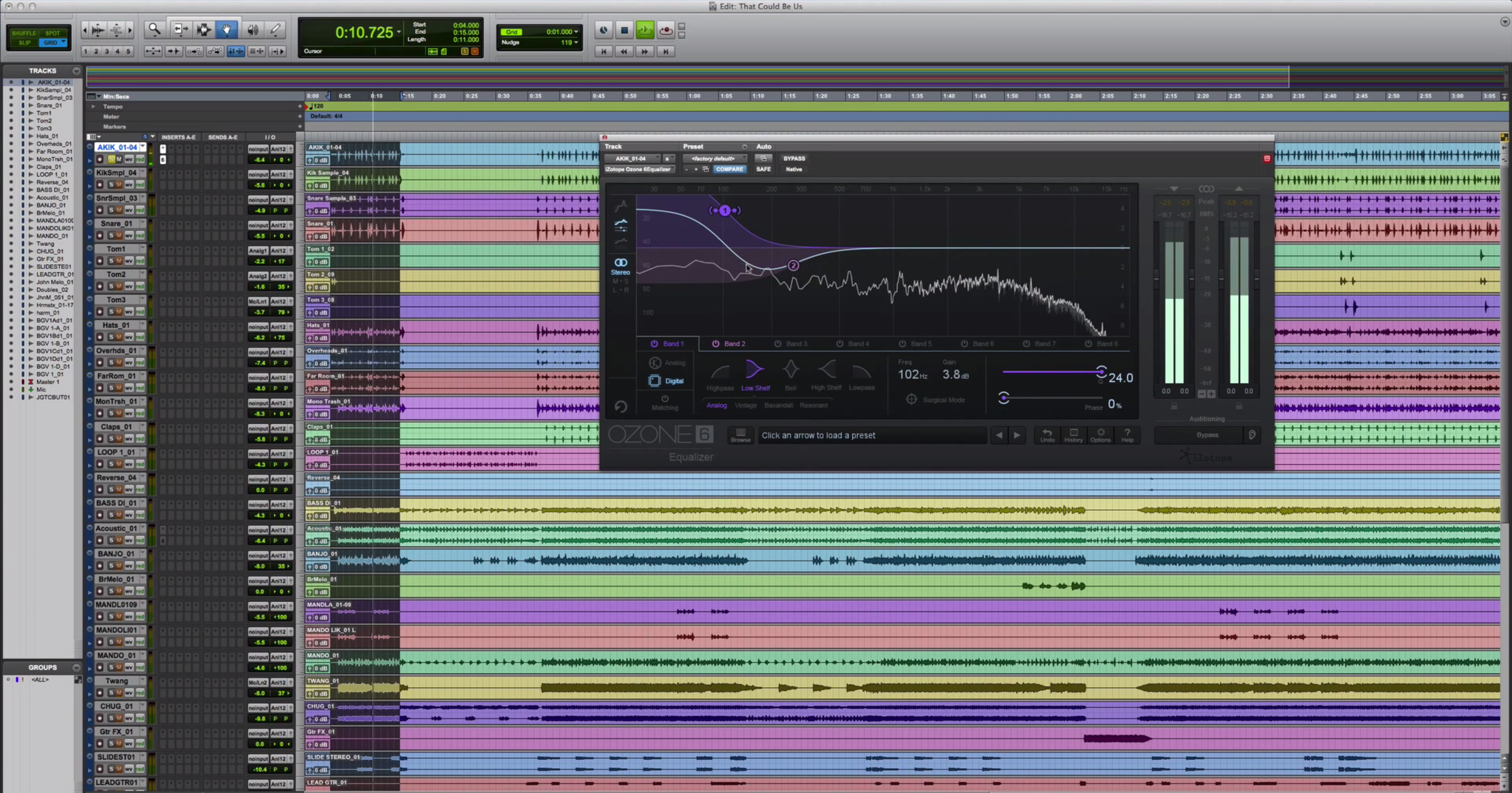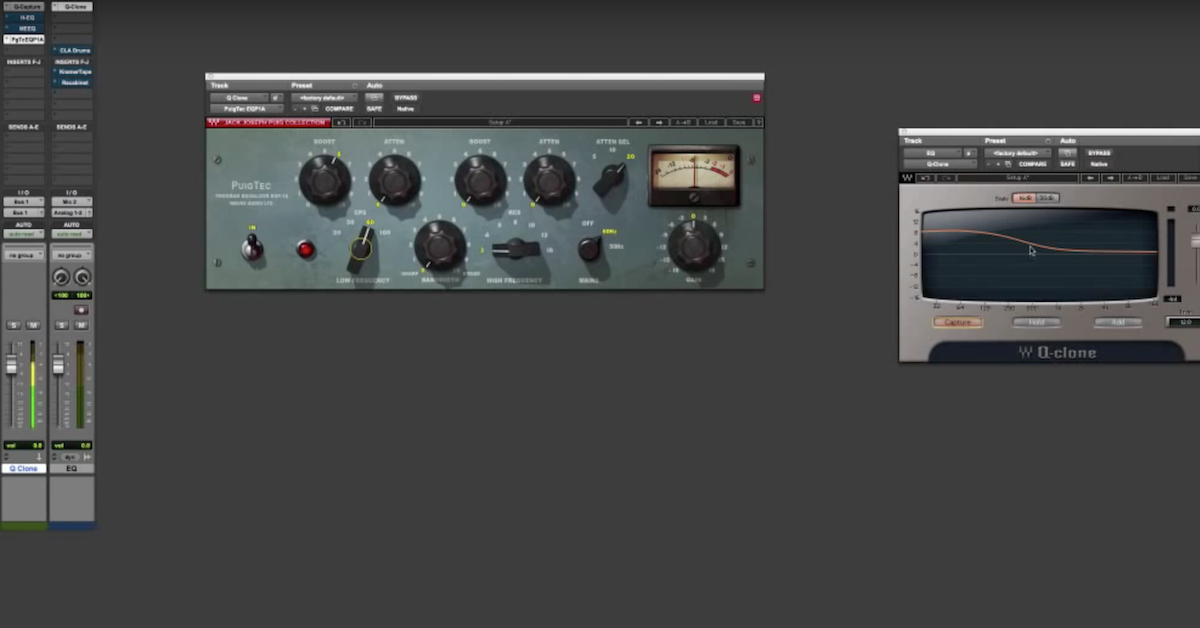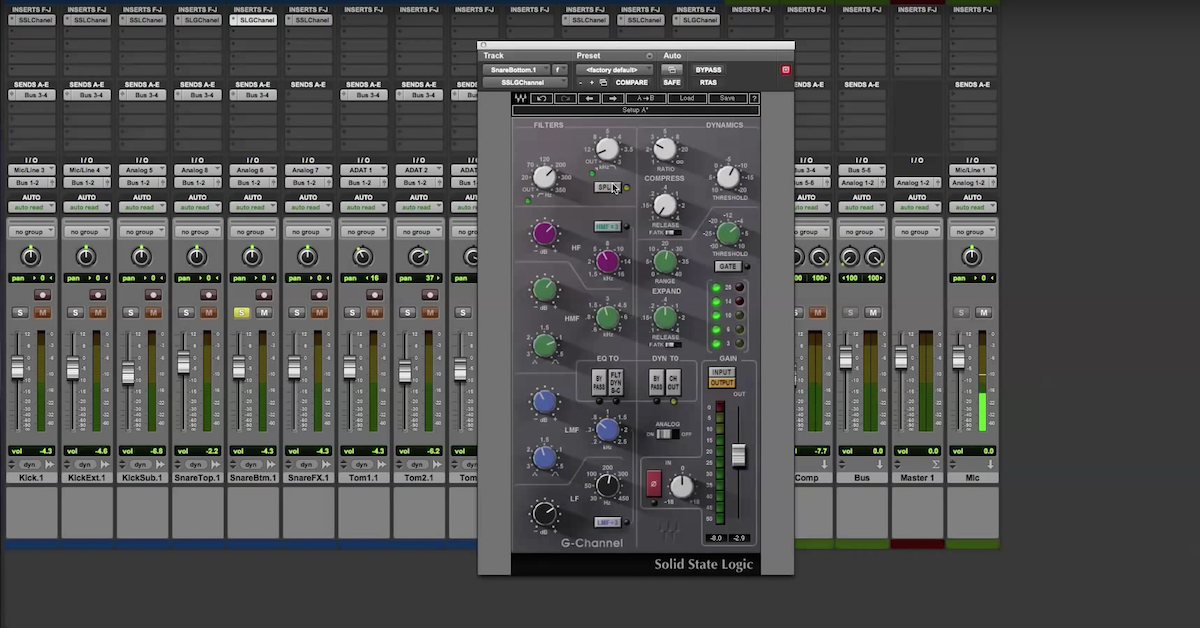6 EQ Plugins Modeled After Analog Hardware
Article Content
Not all equalizers were created equal. You may think that boosting or cutting a frequency would sound the same regardless of the EQ used to cut it — but you’d be dead wrong. With some EQs, every single band has its own unique sound.
Many engineers find that certain analog EQs excel at a particular task. When professional mix engineers use multiple EQs on a single track, it’s not because the sound source needs that much attention — it’s usually because each EQ is doing one thing, but doing it very well. Maybe one EQ has a great sounding top-end, so you add a little sparkle with a high-shelf. Or another EQ is great for performing surgery, like removing a nasty ring from a snare drum. Maybe another EQ is perfect for adding warmth in the low-mids without making things muddy.
Many of the analog equalizers of yesteryear are still used today for just this reason — they do something that no other equalizer can do quite as well. This is by no means an exhaustive list. There are countless EQ plugins modeled after analog hardware, as well as a variety of new plugins with proprietary designs. Here are the most popular plugins modeled after analog equalizers.
1. Pultec EQP-1A
Originally released by Pultec in 1951, the EQP-1A is one of the most unique EQs on the market. It’s technically a three-band EQ with low-shelf, high-peak, and high-shelf controls — although you wouldn’t know by looking at it.
The EQP-1A’s quirky interface is actually part of its charm. By using the individual boost and attenuation controls, you can create some truly unique and musical EQ curves. The EQP-1A features:
- A selectable-frequency low-shelf with separate boost and attenuation controls
- A selectable-frequency high-shelf for boosting
- A selectable-frequency bell curve for cutting with an adjustable Q value
Note: Although the values look the same on the Pultec EQP-1A, the boost function actually has more gain than the attenuation function.
Due to its unique tonal quality and EQ curves, the Pultec EQP-1A is great for adding warmth and sparkle to kick drums, guitars, or even the stereo buss.
Emulated by: Acoustica Audio, Antelope Audio, Bomb Factory, Brainworx, G-Sonique, IK Multimedia, Logic Pro X, Nomad Factory, PSP Audioware, Softube, UAD, URS, Waves
2. SSL E/G-Channel Strip EQ
Often credited with defining the sound of popular music in the 80s, the SSL 4000 channel strip EQs are often praised for their “brightness and clarity”, and “bold, punchy character”.
Modeled after the original SSL 4000 E console introduced in 1979, and the subsequent G Series in 1987, the SSL channel strip EQ is one of the most well-known equalizers in the world. Although the E-Series and G-Series EQs are nearly identical, there are a few key differences:
E Series:
- Two fully-parametric bands
- High and low-shelves with options for bell curves
- Constant frequency bandwidth for more presence, edge
- Models before 1983 used “brown-knob” circuitry, which made the fully-parametric bands more symmetrical
- Models after 1983 feature “black-knob” circuitry designed by George Martin, which made the fully-parametric bands more adjustable
G Series:
- Two fully-parametric bands
- Low-shelf with option to divide low-mid frequencies by three for more frequency options
- High-shelf with option to multiply low-mid frequencies by three for more frequency options
- Steeper filter slopes
- Variable proportional-bandwidth (the more you boost/cut, the narrower the Q becomes) for smoother, more gentle sounds
- Unique EQ curves that use a “pre-boost dip and pre-cut rise”, and offer even greater adjustment
Both the E Series and G Series models have been emulated by a number of manufacturers. Many of the plugins include options to explore the subtle tonal differences of each iteration. Both models sound great on electric guitars, drums, and vocals.
Emulated by: Antelope Audio, Acoustica Audio, Brainworx, IK Multimedia, McDSP, Native Instruments, Ovettone DSP, Slate Digital, UAD, Waves
3. Neve 1073/1084
According to UAD, the Neve 1073 channel module “is considered the most revered EQ circuit ever designed”. There are many different emulations that model the different eras of Neve console EQs, but by far the most common is the 1073. Originally designed in 1970, the 1073 offers three bands of EQ with:
- A fixed-frequency high-shelf at 12kHz
- A selectable-frequency bell curve
- A selectable-frequency low-shelf
- A selectable high-pass filter
Years later, an updated version known as the Neve 1084 was released, with updated features, including:
- A selectable-frequency high-shelf
- A selectable-frequency bell curve with switchable “High-Q” option
- A selectable-frequency low-shelf
- A selectable high-pass filter
- A selectable low-pass filter
The 1073 and 1084 EQs are often described as warm, fat, and full. Both models sound great on drums, bass, and vocals.
Emulated by: Acoustica Audio, Analog Obsession, Brainworx, IK Multimedia, Logic Pro X, McDSP, Nomad Factory, PSP Audioware, Slate Digital, UAD, URS, Waves
4. API 55A/B and 560
Released in 1971, the API 550 EQ is often described as “the sound of classic American music”. Utilizing the sound of the legendary 2520 amplifier, this EQ is known for it’s deep, rich sound. The 550A was API’s first EQ model, which featured:
- Three EQ bands with seven selectable frequencies
- Switchable bell/shelf options for bands one and three
- “Proportional Q” technology which increases the Q value as the gain is increased
Note: Years later, the 550B was introduced, which featured a fourth band of midrange EQ.
In addition to the semi-parametric 550 models, API also released a 10-band graphic equalizer for use in their consoles in the 60s and 70s. These units use the same 2520 op-amp and proportional Q technology to deliver the legendary API sound with unmatched curve-shaping potential.
Although the 550 and 560 units have their own distinct sounds, all three units work well on kick, snare, bass, and guitars.
Emulated by: Acoustica Audio, Antelope Audio, IK Multimedia, Logic Pro, PSP Audioware, UAD, Waves, Slate Digital
5. Manley Massive Passive
Certainly the most modern analog unit on the list, the Massive Passive is a stereo tube EQ introduced by Manley Labs in 1998. It was originally designed to be a “Super Pultec EQ”, and been described as “organic”, “natural”, “smooth”, “liquid”, “powerful”, “sweet”, and “the mother of all EQs”. The Massive Passive features:
- Dedicated low and high-pass filters
- Four bands with selectable frequencies
- Switchable bell/shelf options for bands one and four
- A variety of selectable bandwidth options for each band (including the shelves)
- Dedicated cut/boost toggle switch for each band
The most unique thing about the Massive Passive is that it routes each band in parallel, instead of in series. For instance, with most EQs, the signal runs through band one first, then band two, and so on. But the Massive Passive processes each band individually, and according to UAD “the bands don’t add up like most EQs”.
Because of this, you get away with using the Massive Passive more aggressively than you would most other EQs. And it sounds great on literally everything.
Emulated by: Native Instruments, UAD
6. Trident A-Range
Trident Studios was a famous recording facility in Britain during the 1970s and 80s. During their short but influential run, they produced exactly 13 Trident A-Range consoles. These desks had a sound that defined the “Golden Age of rock records”. These desks had a truly unique sound, preferred by artists like David Bowie, Genesis and Elton John.
Trident A-Range EQs have an inductor-based design and utilize “clever band interactions and distinct cut filter combinations” to achieve truly unique sounds. Each unit features three high-pass filters and three low-pass filters that can be used simultaneously to create unusual filter curves. The rest of the unit is pretty straight-forward:
- A low-shelf with four selectable frequencies
- Two mid-range bands with four selectable frequencies
- A high-shelf with four selectable frequencies
These units are most revered for their famous high-frequency shelving EQ, which sounds great on kick, bass, guitar, piano, and vocals.
Emulated by: Arturia, Softube, UAD
https://www.youtube.com/watch?v=ZZwsCn70dRk










